Economic data activity will pick up again this week, culminating in the PCE report on Friday. Additionally, NVIDIA’s (NASDAQ:NVDA) midweek earnings, which have become a significant market-moving event in recent quarters, will also be in focus.
Friday also brought some surprises, with the University of Michigan survey showing that long-run inflation expectations rose to 3.5% in February—the highest reading since 1995.
This is certainly not an encouraging number, given where we are in the cycle and the ongoing narrative that inflation expectations remain well anchored.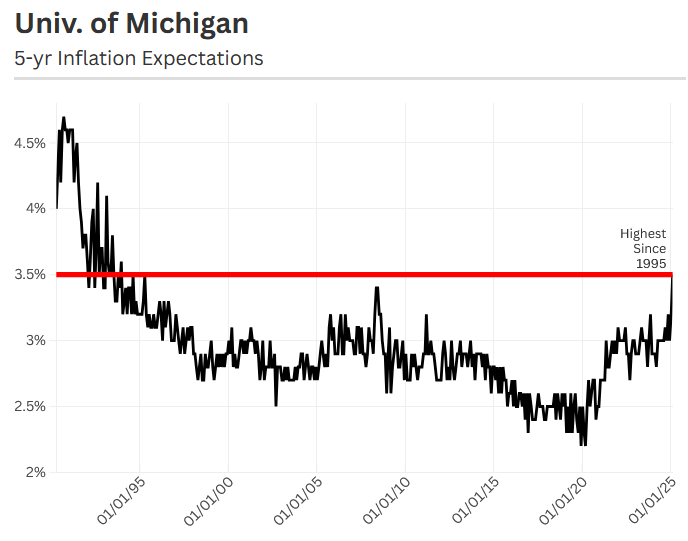
It’s not just consumers—market-based inflation expectations have also risen sharply, with the 2-year inflation swap breaking through a key resistance region between 2.6% and 2.7%. The Fed is also taking notice, with St. Louis Fed President Albert Musalem noting that this could make the Fed’s job more challenging.
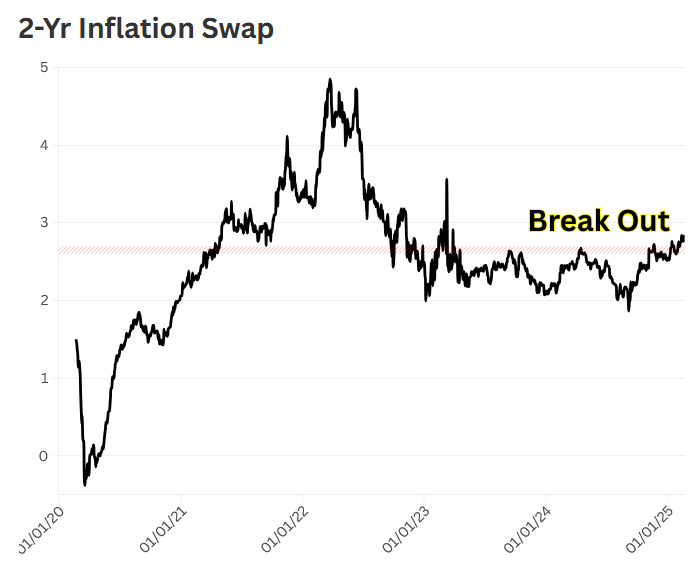
This week’s PCE report likely won’t have much impact unless it delivers a significant surprise, either higher or lower. The market has largely priced in an inline number.
The main risk is that the market has miscalculated something, but for the most part, analysts have done a good job of accurately pricing the PCE report in the past.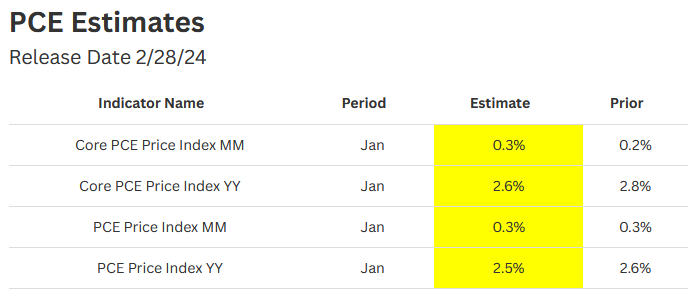
Despite this, bond yields fell sharply on Friday. The S&P Global PMI data was weak, suggesting a significant slowdown in February growth.
The report also highlighted wage pressures and higher prices in the manufacturing sector. As costs rise, the services sector appears at risk for margin compression, but companies hesitate to pass them on. This data resembled mid-week reports from the Empire State and Philly Fed surveys.
That makes this week’s survey data particularly important—if the trends seen in the Philly Fed and Empire State surveys continue in the Dallas Fed, Richmond Fed, and Kansas City Fed reports, it would be cause for concern.
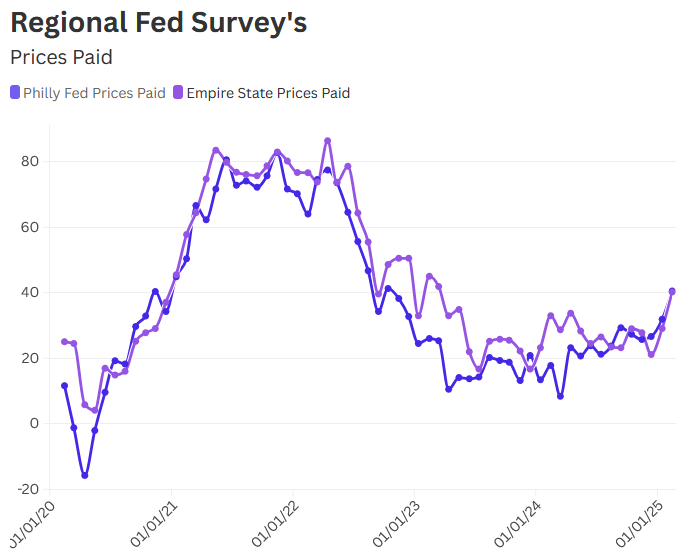
Strangely, the bond market’s reaction suggested an economic slowdown, possibly due to higher prices and slowing growth. It’s hard to say at this point, as survey data on the overall economy isn’t always reliable.
However, the inflation data tends to be pretty accurate. Unless there is a slowdown in the job market, I believe the economy will remain healthy. If the job market were slowing, wage pressures likely wouldn’t be a concern, as noted in the PMI report on Friday.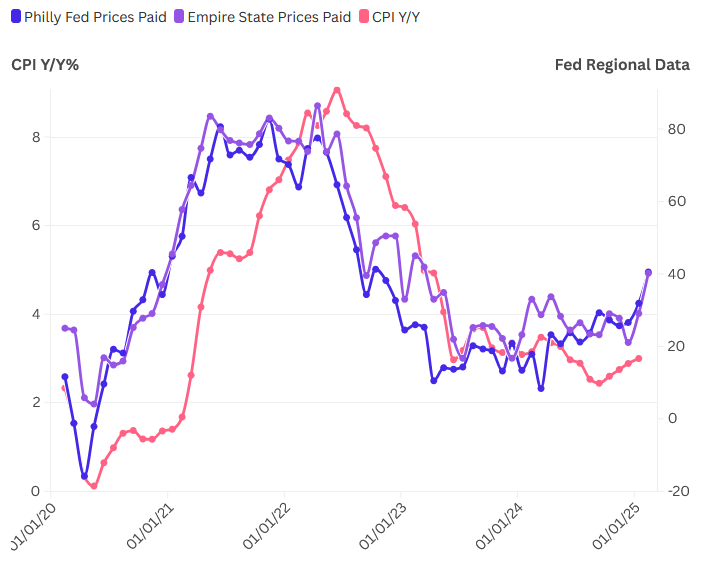
The 10-year yield continues to find support around the 4.4% region—the 61.8% retracement level. This is critical; if broken, the yield could slip further, potentially back to the 4.15% region. However, given rising inflation expectations, I don’t think the 10-year rates will likely fall much further unless the market thinks higher inflation will cause a recession.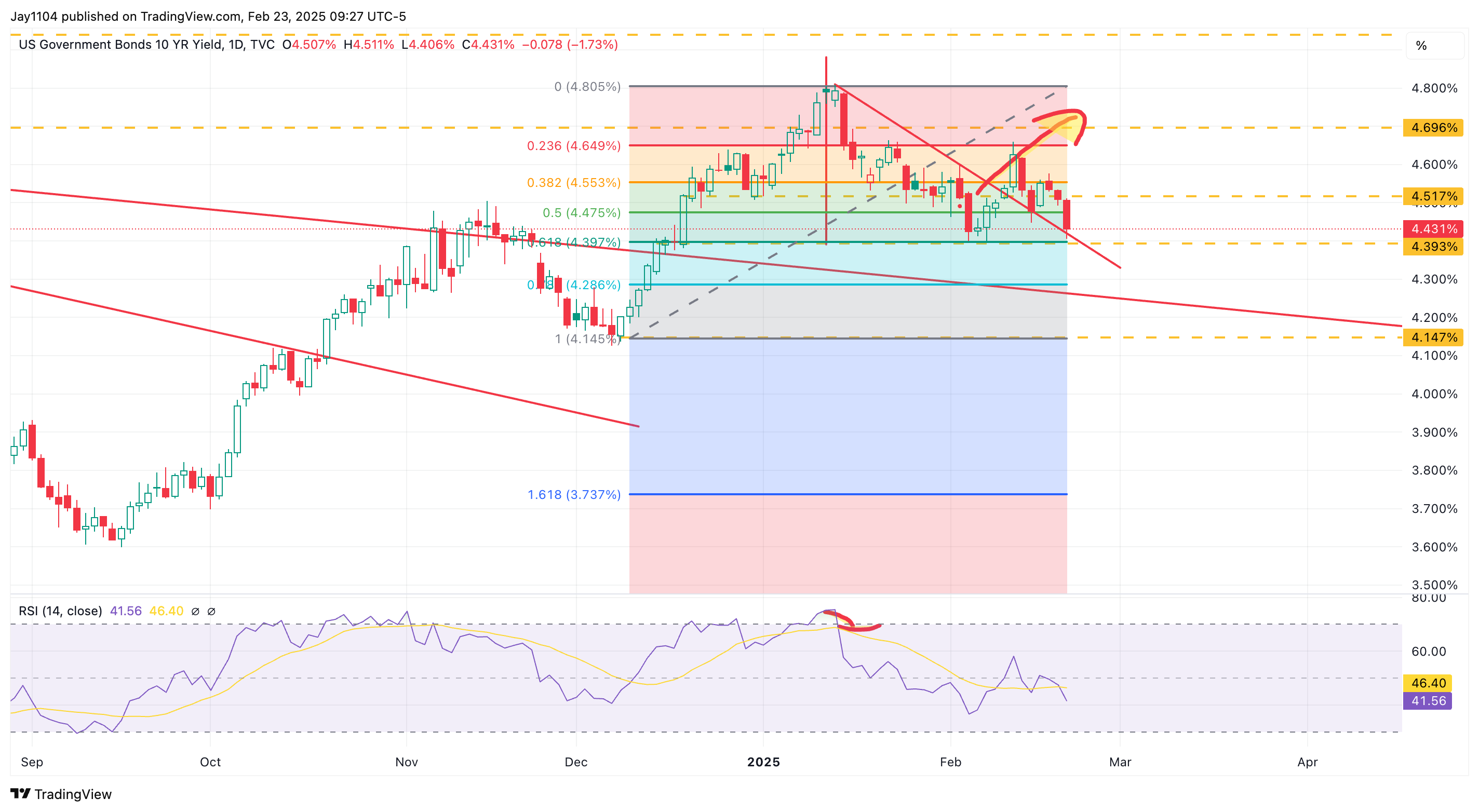
We also saw a significant increase in VIX 1-day on Friday, rising to around 18, which could give the market a substantial boost on Monday morning, at least at the open.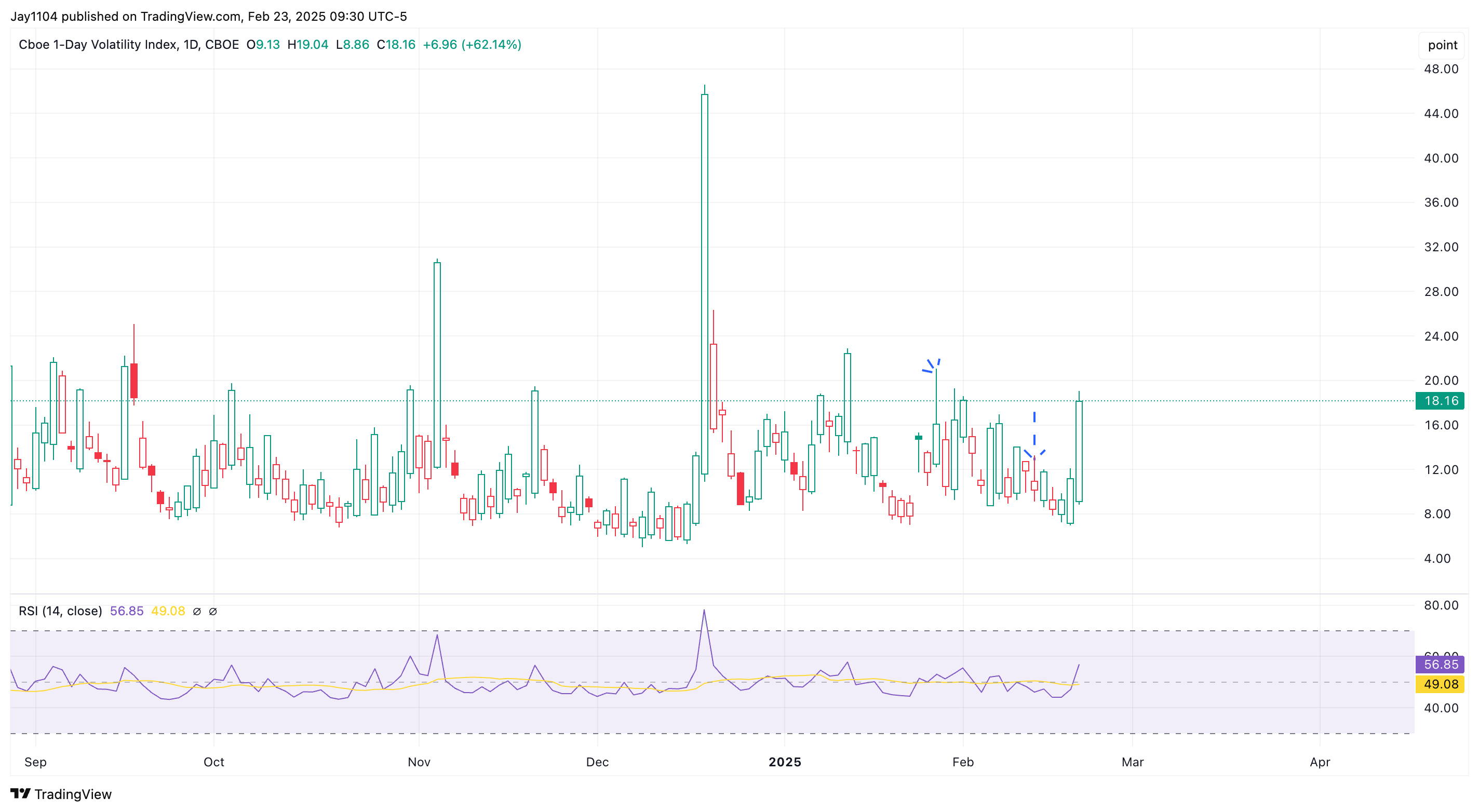
One overlooked event this weekend that could have sent US yields lower and the VIX 1-Day higher is the German election, as investors looked for safety and hedges. Anyone in Europe knows this is a significant election, and its results will have a profound impact on the continent and how the market is pricing risk.
Credit spreads have tightened materially, particularly between German and Italian 10-year yields. Usually, this contraction would be seen as a positive and, most importantly, a risk-on signal.
However, I’m not sure that is what’s happening in this case. Instead, it seems more like a sign of nervousness in the bond market and concern over the election’s potential impact on the German economy.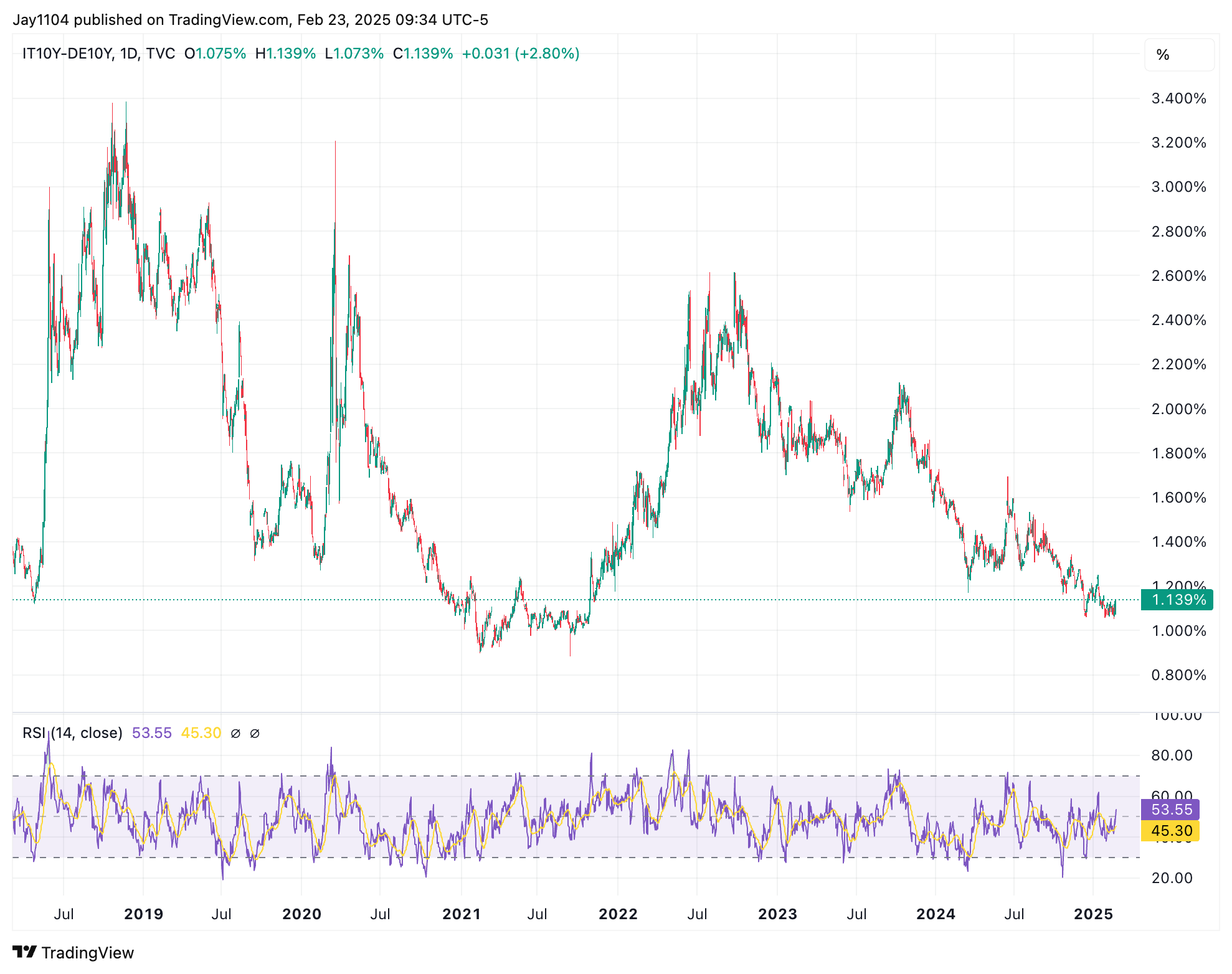
When inverting the S&P 500 futures chart and overlaying it with the spread above, it’s fairly easy to see that the index and spread are partially aligned. This also explains how the tightening of the credit spread could be mistaken for a risk-on state. However, we won’t know for sure until after the election—if the results are better than feared, the spread may actually start to widen again as concerns over the German economy ease.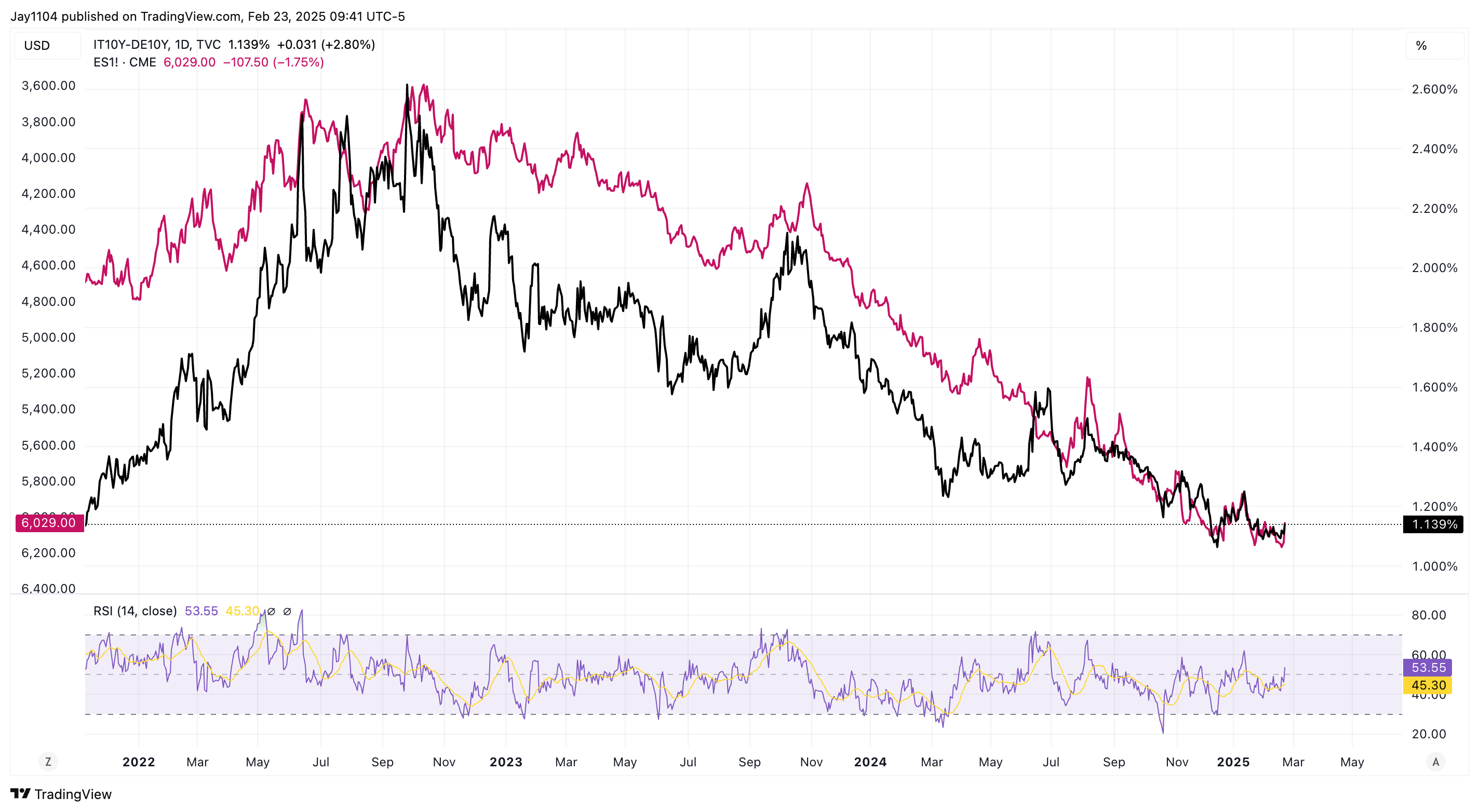
The same applies to US High-Yield credit spreads and the Italian-German spread. Based on what I’ve read, results should start coming out later this afternoon.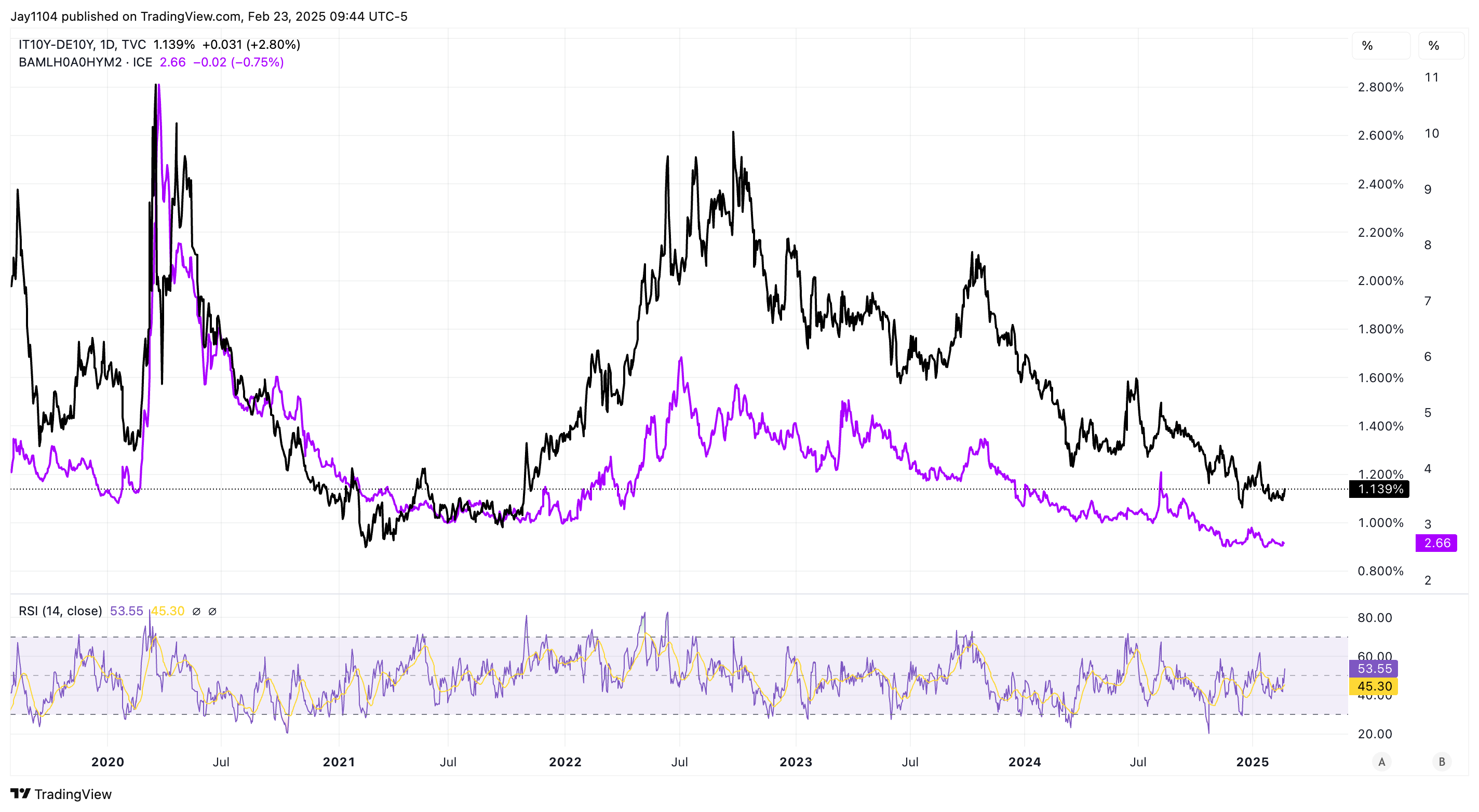
As for the S&P 500, volatility will likely be elevated this week, with Nvidia’s results on Wednesday and the PCE report on Friday. Additionally, Friday’s sell-off pushed the S&P 500 into negative gamma, with the zero gamma level likely around 6,100. This means market makers will be trading in the direction of the market.
Given the options market positioning last week, I noted that I didn’t think the S&P 500 would see a significant breakout. However, there appears to be some room for upside early in the week following last week’s sell-off. The S&P 500 could reach 6,050 to 6,060 if the VIX 1Day drops hard on Monday and as long as support at 6,000 holds. If support breaks, we could move back to 5,940 to 5,950 or possibly lower.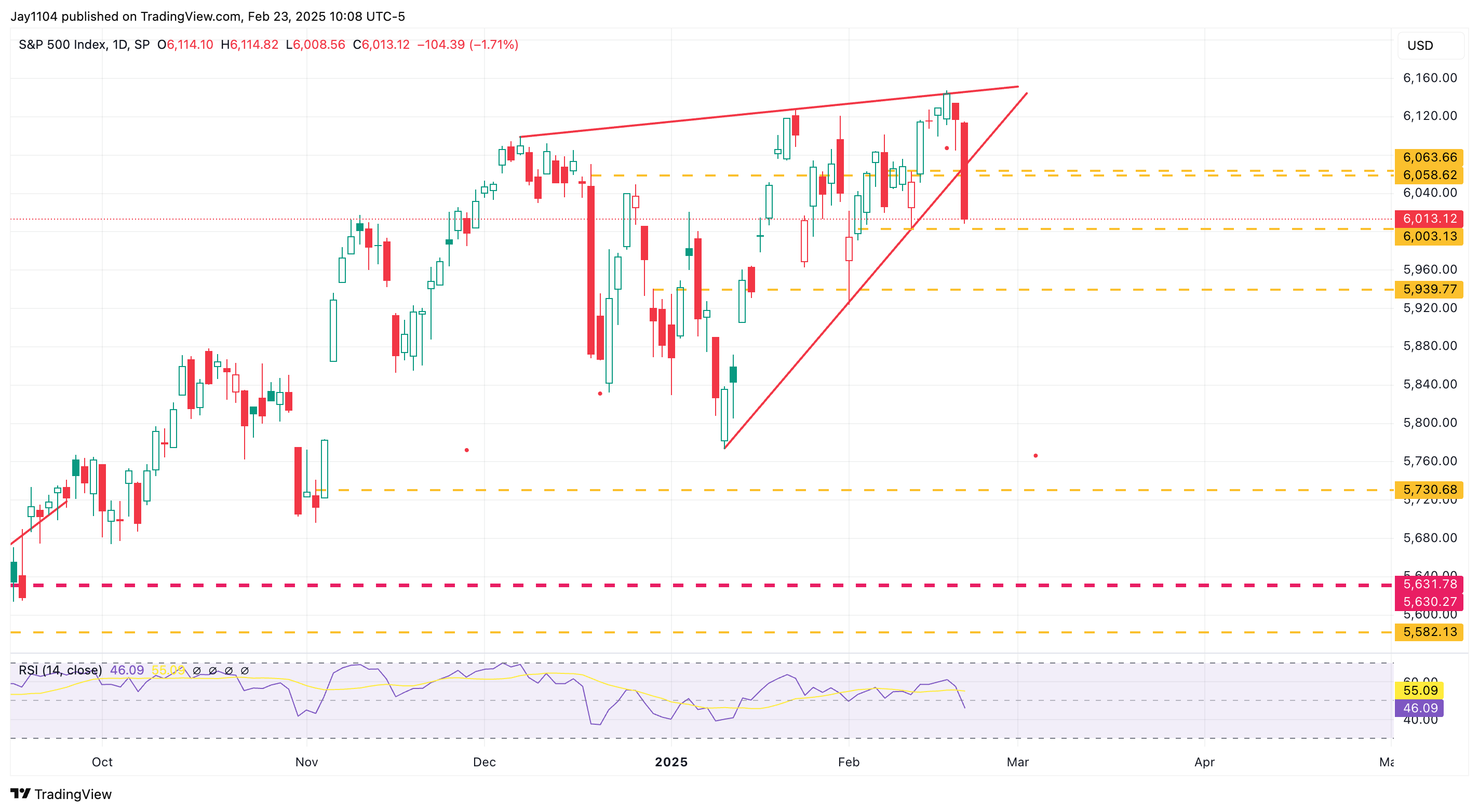
***
Terms By ChatGPT
- 1. Negative Gamma – A situation where market makers must trade in the direction of market movements, potentially amplifying volatility.
- 2.Zero Gamma Level – The point at which market makers’ hedging behavior shifts, affecting market dynamics.
- 3.2-Year Inflation Swap – A derivative contract used to hedge or speculate on inflation over a two-year period.
- 4.61.8% Retracement Level – A key Fibonacci retracement level, often used in technical analysis to identify support or resistance.
- 5.Margin Compression – When a company’s costs rise faster than its ability to pass them on to consumers, reducing profitability.
